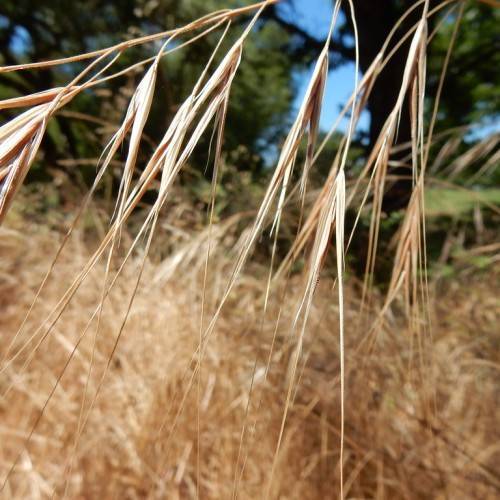
Ripgut Brome
Bromus diandrus
Also Known As - Great BromeWatering:
Minimal
Hardiness Zone:
Sun:
full sun,part shade
Leaf:
Yes
Growth Rate:
High
Drought Tolerant:
Yes
Salt Tolerant:
Yes
Invasive:
Yes
Care Level:
Medium
watering
Rescue Grass (Bromus catharticus) needs to be watered regularly, but not too frequently. Aim to water the grass once a week, and water deeply until the soil is saturated. If the plant is in direct sunlight, it may need more frequent watering. In hotter climates, Rescue Grass should be watered 2 to 3 times a week during summer months; and in cooler climates, once a week or less should be sufficient. Be careful not to over-water the plant, as this can cause it to become waterlogged and die.
sunlight
Rescue Grass (Bromus catharticus) grows best in full sunlight. It prefers 6 to 8 hours of sunlight per day. In the warm summer months, it should receive direct sunlight for most of the day, although some afternoon shade is helpful in preventing the plant from drying out. In cooler months, the grass should be exposed to no less than 4 hours of direct sunlight, although it can tolerate some periods of shade in early morning or late evening.
pruning
Rescue Grass (Bromus catharticus) should be pruned in late winter or early spring before new growth begins. Pruning should be done lightly, with only the dead or damaged foliage, stems, and flowers being removed. Cutting back more than a third of the existing foliage may damage the plant, so perform more than 1 round of pruning if necessary. This will promote new growth and encourage bushier, more compact plants. Branches may also be pruned to any desired shape.
